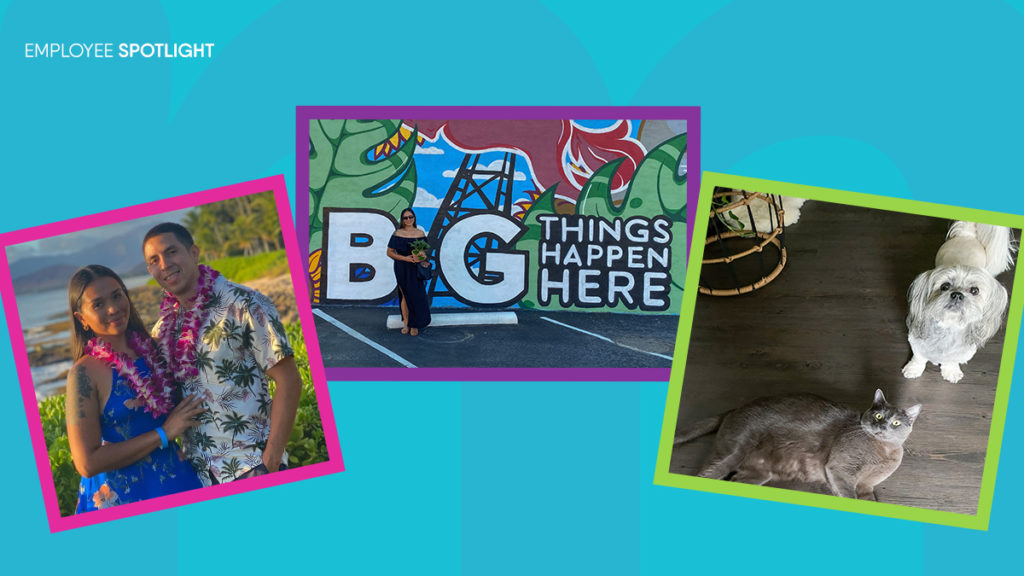Celebrating Social Media Day with a Toast to GIFs, Memes and Emojis
June 30th is Social Media Day! Mashable launched the holiday in 2010 (and then disowned it to give everyone control of the day last year) as a way to recognize and celebrate social media’s impact on global communication.
And for marketers, communication is really what social media is all about, right? Social media allows us to express the personality of our brands and share stories in a way that engages with our audiences. So, to celebrate the holiday, we wanted to toast a few of our favorite tools for communicating on social media. That’s right, we’re talking about GIFs, memes and emojis.
Choosy marketers choose GIFS
In 1987, a team of developers at CompuServe headed by Steve Wilhite needed a way to make computers display an image while also saving memory. The result was a compression algorithm that Wilhite dubbed the Graphics Interchange Format – aka, the GIF. (For the record, Wilhite prefers a soft G to pronounce GIF as a play on Jif Peanut Butter: “Choosy developers choose GIF.”)
More than three decades later, Wilhite’s creation remains a fan favorite on social media. GIFs allow us to quickly express our feelings, synthesize our thoughts and formulate responses to today’s hottest topics, all without having to actually formulate complete sentences.
Want to celebrate your brand’s recent successful initiative? Hit ‘em with a GIF:
Want to express confusion or frustration? Britney has you covered:
No matter what point you’re trying to make, GIFs make it way easier and more entertaining. And for marketers, they can be huge for increasing social media engagement. 
Less work and higher engagement?! Yeah, we’re going to need a GIF to demonstrate how we feel about GIFs.
Relax, there’s a meme for that

Let’s cheers to another creation that helps us express ourselves on social media without requiring us to come up with original ideas – the meme. The idea of a meme had been around since the 1970s but Wired’s Mike Godwin (the creator of the famed internet adage Godwin’s Law) popularized the concept for online usage in the early 90s.
Godwin conceptualized the term “meme” as an idea that functions in the human mind the way a gene or virus does in the body. The more popular (i.e., infectious) the meme, the more efficiently it spreads from person to person. Now, Godwin wasn’t focused on memes as a marketing tool; he was actually trying to explain how internet arguments had a disturbing habit of devolving into Nazi comparisons.
But, memes can be used for good as well as evil. For marketers, memes are a valuable tool for making simple points and responding to trending topics in a funny way. For example, by tweeting out a meme in real time during the 2013 Super Bowl, Oreo racked up almost 7,000 likes and more than 14,500 retweets for a marketing message that cost $0 to send out.
Power out? No problem. pic.twitter.com/dnQ7pOgC
— OREO Cookie (@Oreo) February 4, 2013
Given that Super Bowl commercials cost millions of dollars for a 30-second spot, that sounds like a pretty good return for Oreo – and it’s all thanks to having the right meme at the right time.
Emojis: Express yourself without words
Sometimes, words just can’t convey a point as well as an image. And, if a picture is worth a thousand words, a tiny image has to be worth at least a few hundred, right? Well, that’s the idea behind the emoji.
In 1999, Japenese artist Shigetaka Kurita wanted to find a way to convey complex information in a simple, succinct way. The result was a library of 176 emojis to provide information like weather forecasts (sun, clouds, umbrella, snowman), traffic (car, tram, airplane, ship) and technology (landline, cell phone, TV, GameBoy).
Today, there are more than 3,000 emoji characters in the Unicode Standard, including variations, and there’s no reason to think this will slow down any time soon. In fact, Wired’s guide to the emoji predicts emojis will play an even larger role in our communication in the future:
In the future, as the world becomes increasingly digital and increasingly globalized, emoji will become important tools for translation and communication – a lingua franca for the digital age.
We already put a lot of pressure on emojis to illustrate some of our most complex, personal and – if we’re being honest – juvenile thoughts and feelings. Given the importance of brevity and the need to visually stand out on social media, this makes finding the right emoji an important skill for marketers. In fact, marketers who perfect their emoji game reap some pretty decent spoils.

We want to know: What are your favorite ways to share your story on social? Let us know by sharing your thoughts – and your favorite GIFs, memes and emojis – with us.
More from Mindstream Media Group

Meet the Mindstreamer – Chandler Swanner
Chandler Swanner’s interest in advertising dates back to her childhood. Her mother (and role model in life) was a Media […]

Third-Party Cookie Phase-Out: What Marketers Need to Know
Cookies are an essential part of internet usage, allowing websites to remember you and provide a more personalized experience. This […]

Meet the Mindstreamer – Kaya Bucarile
She plans and oversees media strategy for agency clients, working closely with project and platform managers to ensure that we […]
